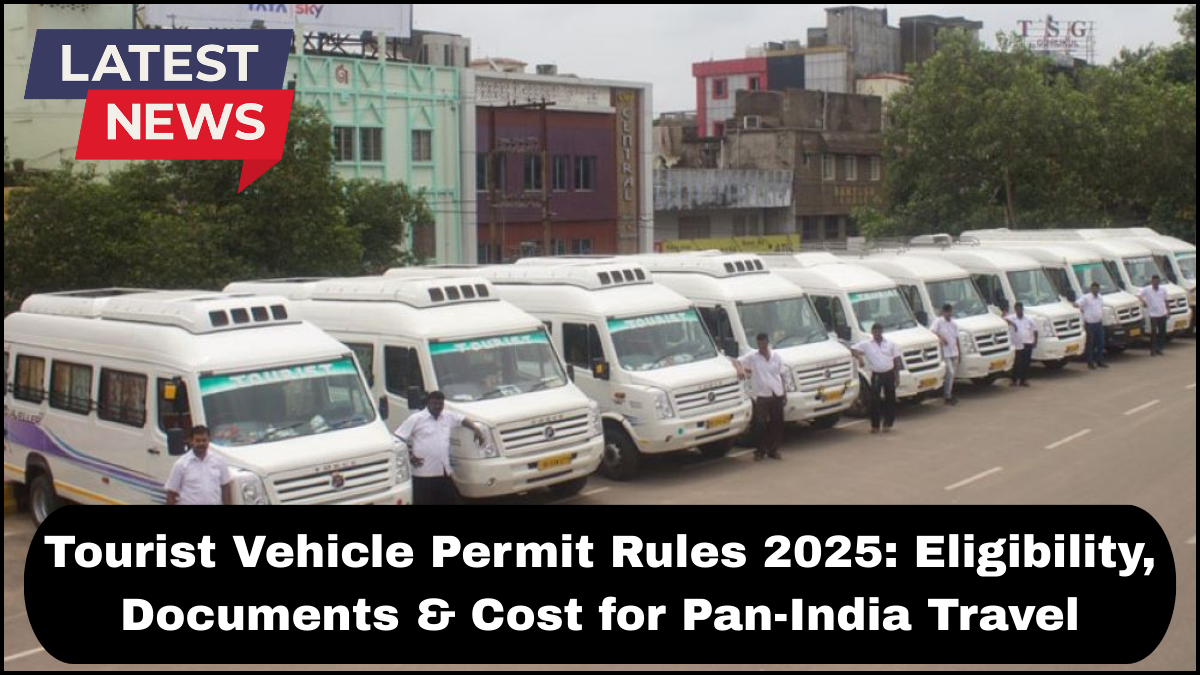Navigating India’s diverse landscape for tourism just got more streamlined. With the Tourist Vehicle Permit Guide 2025, the government has introduced updated rules that simplify and regulate how tourist vehicles operate across state lines. Whether you’re a tour operator or a private vehicle owner interested in expanding into tourism services, understanding these updated regulations is essential.
Here’s a comprehensive look at the new tourist vehicle permit rules, including eligibility, documentation, cost structures, and what they mean for all-India travel.

What Is a Tourist Vehicle Permit?
A Tourist Vehicle Permit is an official authorization that allows commercial passenger vehicles to operate across multiple states in India without the need to obtain separate local permits. This includes taxis, vans, buses, and SUVs registered with tourism agencies or travel companies. These permits are especially valuable for tour operators who cater to clients on inter-state travel itineraries.
The All India Permit for Travel Cars is part of this system, offering unrestricted movement for eligible tourist vehicles throughout the country.
Key Updates in the 2025 Permit Rules
The Tourist Vehicle Permit Guide 2025 introduces several significant changes aimed at standardization and ease of compliance:
-
Unified Permit Format: All states will now follow a standardized permit format issued digitally through the Ministry of Road Transport and Highways (MoRTH).
-
e-Vahan Integration: Vehicle registration and permit data will be fully integrated with the Vahan national database to ensure seamless verification by authorities.
-
QR-Code Based Authentication: Permits will carry QR codes to make on-road verification faster and tamper-proof.
-
Reduced Paperwork: Digital submission of all documentation is now mandatory, eliminating the need for physical visits to RTOs.
Eligibility Criteria for Tourist Vehicle Permits
To apply for a permit under the 2025 framework, vehicles and applicants must meet specific eligibility conditions:
-
Vehicle Type: Only commercially registered vehicles meant for carrying passengers qualify. This includes cars, tempo travellers, minibuses, and luxury coaches.
-
Vehicle Age Limit: Vehicles should not be older than eight years at the time of application.
-
Ownership: The vehicle must be owned by a registered tour operator or a transport business entity.
-
Emission Compliance: Vehicles must be BS-VI compliant with a valid pollution under control (PUC) certificate.
-
Insurance Coverage: Comprehensive commercial vehicle insurance is mandatory.
Required Documents for the Permit
Here’s a breakdown of the documents you’ll need to apply under the Tourist Vehicle Permit Guide 2025:
-
Commercial Vehicle Registration Certificate (RC)
-
Valid Roadworthiness Certificate (Fitness)
-
Vehicle Insurance (comprehensive)
-
Pollution Under Control (PUC) Certificate
-
GST Registration Certificate (for operators)
-
Applicant’s Aadhaar card and PAN
-
Address proof of the business entity
-
Photographs of the vehicle with operator branding
-
Proof of previous permits or licenses (if applicable)
All documents must be uploaded digitally via the MoRTH online portal.
Permit Cost and Validity
Under the 2025 rules, the permit fee structure is based on the type and seating capacity of the vehicle:
-
Small Cars (up to 6 passengers): ₹15,000 per annum
-
Mid-size Vans/Tempo Travellers: ₹25,000 per annum
-
Luxury Coaches/Buses: ₹50,000 per annum
Additionally, there is a one-time processing fee of ₹5,000. The permit is valid for five years and renewable upon meeting compliance norms.
Benefits of the 2025 Tourist Permit System
-
Pan-India Travel Without Interruption: With the all India permit for travel cars, there’s no need to apply for separate state-wise permits.
-
Boost for Tourism Sector: Easier vehicle mobility supports longer and more complex tour packages across India.
-
Reduced Compliance Hassle: Digital records reduce friction with enforcement officers and cut down administrative costs.
-
Higher Safety and Transparency: QR-based verification ensures that vehicles are traceable and monitored, adding a layer of passenger safety.
How to Apply for a Tourist Vehicle Permit in 2025
-
Visit the Parivahan Sewa Portal
-
Navigate to the Tourist Permit section.
-
Register your vehicle and upload the required documents.
-
Pay the applicable fees online.
-
Download your QR-enabled digital permit once approved.
The entire process typically takes 5–7 working days, depending on your state’s transport department.
FAQs About Tourist Vehicle Permit Guide 2025
Q1. Can private vehicles apply for a tourist permit?
No. Only commercially registered vehicles owned by certified tour operators or transport companies are eligible.
Q2. What happens if my vehicle crosses a state border without a tourist permit?
You may face fines, impoundment of the vehicle, or other legal consequences under the Motor Vehicles Act.
Q3. Is the permit transferable if I sell my vehicle?
No. Permits are non-transferable. A new owner must reapply if the vehicle remains in commercial service.
Q4. Can I operate in restricted zones or border areas?
Some areas may still require special permissions. Always check with local transport authorities before entering sensitive zones.
Q5. Do electric tourist vehicles follow the same rules?
Yes, although certain states offer concessions on fees and taxes for electric vehicles.
click here to learn more